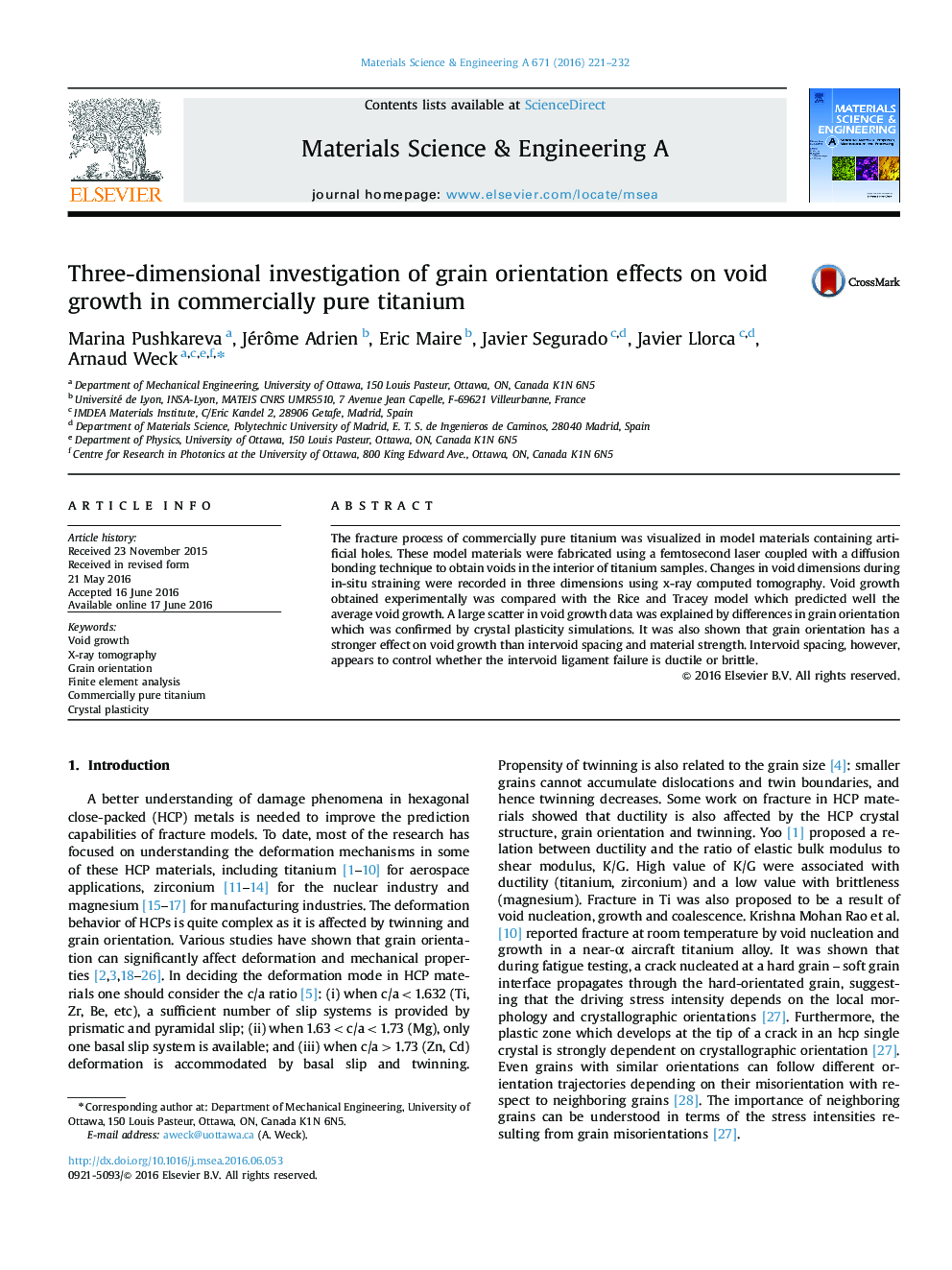| Article ID | Journal | Published Year | Pages | File Type |
|---|---|---|---|---|
| 1573207 | Materials Science and Engineering: A | 2016 | 12 Pages |
Abstract
The fracture process of commercially pure titanium was visualized in model materials containing artificial holes. These model materials were fabricated using a femtosecond laser coupled with a diffusion bonding technique to obtain voids in the interior of titanium samples. Changes in void dimensions during in-situ straining were recorded in three dimensions using x-ray computed tomography. Void growth obtained experimentally was compared with the Rice and Tracey model which predicted well the average void growth. A large scatter in void growth data was explained by differences in grain orientation which was confirmed by crystal plasticity simulations. It was also shown that grain orientation has a stronger effect on void growth than intervoid spacing and material strength. Intervoid spacing, however, appears to control whether the intervoid ligament failure is ductile or brittle.
Keywords
Related Topics
Physical Sciences and Engineering
Materials Science
Materials Science (General)
Authors
Marina Pushkareva, Jérôme Adrien, Eric Maire, Javier Segurado, Javier Llorca, Arnaud Weck,
